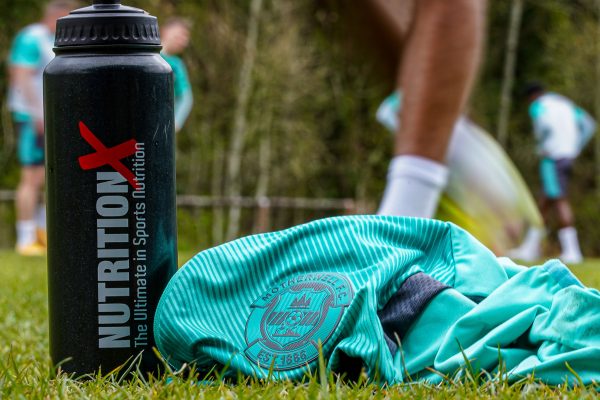When it comes to sports nutrition and effectively supporting the elite athlete, professional nutritionists have their work cut out for them, and it certainly pays to have a plan in place to ensure every new season gets off to a flying start. Here, we’ve caught up with Beth Cragg – Premier League nutritionist – for her expert advice; invaluable for any nutritionist working in the football sphere.
“I’ve learned some valuable lessons during my time working in Premier League Football. One is how important it is to be prepared when you come into the new season, because when preseason starts, it’s all systems go and if you haven’t organised your supplement providers, refilled the stock and planned your nutrition delivery and season targets, it can be a bumpy start.
The end of the season is therefore a really important time to plan and reflect, to ask yourself, the medical team, and the players: what worked well this season and what could be improved? The answers from these will guide how you deliver and advance your nutrition support in the next season.
I have listed below three key elements that I feel are important to think about when you are doing this:
Buy-in from the players
In my experience, getting every player to buy-in to the value of nutrition for both health and performance can take time. This is especially the case as some players will have reached elite level without ever considering their food choices, so the question you often get asked is, “why should I start now?”
Consequently, thinking about how you can increase buy-in from targeted players will be an important question for the new season. Educating the players on how nutrition can further improve their performance is key and I have found that it’s important to learn what drives them in their career and show them how nutrition can support this. For example, they might want to increase their longevity as a player and/or improve their speed, decision making and endurance on the pitch. Gaining their trust and respect is also important in this process and this can take time. For me, it meant spending a lot of time in the canteen, the corridors and the gyms, so I could get to know the players better; it always paid off.
Another idea is to think about how you can manipulate the environment to sell nutrition to the players. You could create a display that demonstrates how eating more carbohydrates can improve their performance on the pitch or put up nuggets of information around the training ground to catch their interest.
Get Creative and Trial New Ideas
It’s important to keep the players interested and avoid being repetitive when delivering information. So, get creative at this time and think about how you can mix up your delivery in the new season. Sometimes creating a visual display of food to demonstrate the recommended energy intake of a football player in-season can be more powerful than delivering a presentation. Similarly, getting the players involved in workshops can improve their engagement. If it’s feasible, go out to the pitch and create a session where the players use the football to demonstrate a nutrition concept. This is also a time to be collaborating with the chefs to think about any new ideas that could be introduced in the menu, but I would recommend doing this early so you can trial anything new with the players to see if it’s worth your time. A tasting session is always well received!
A key learning point for me was that not everything you try will be a success, but resilience is key in football, so don’t give up. Discussing ideas with your multidisciplinary team can be helpful as they spend a lot of time with the players, so can often share some valuable insights.
Individualise Your Approach As Best As You Can
As with any nutrition concept, a one-size-fits-all approach doesn’t produce optimal results. So, it’s important to try and individualise your nutrition support as best you can within the team, particularly around match days. This can take time as it often means trialling different flavours, textures and combinations, before then asking each player which they prefer and how they would like it served (for example, a recovery shake served chilled or at room temperature). Once you get past the hard work at the beginning, you will be rewarded with better uptake and subsequent improvements in fundamentals such as recovery or fuelling.
So, when planning for the new season, consider how you can further individualise how you deliver nutrition, and this often goes hand in hand with points covered in the first two sections - build rapport to learn about how each player best responds to nutrition support and be creative in how you follow this up.







